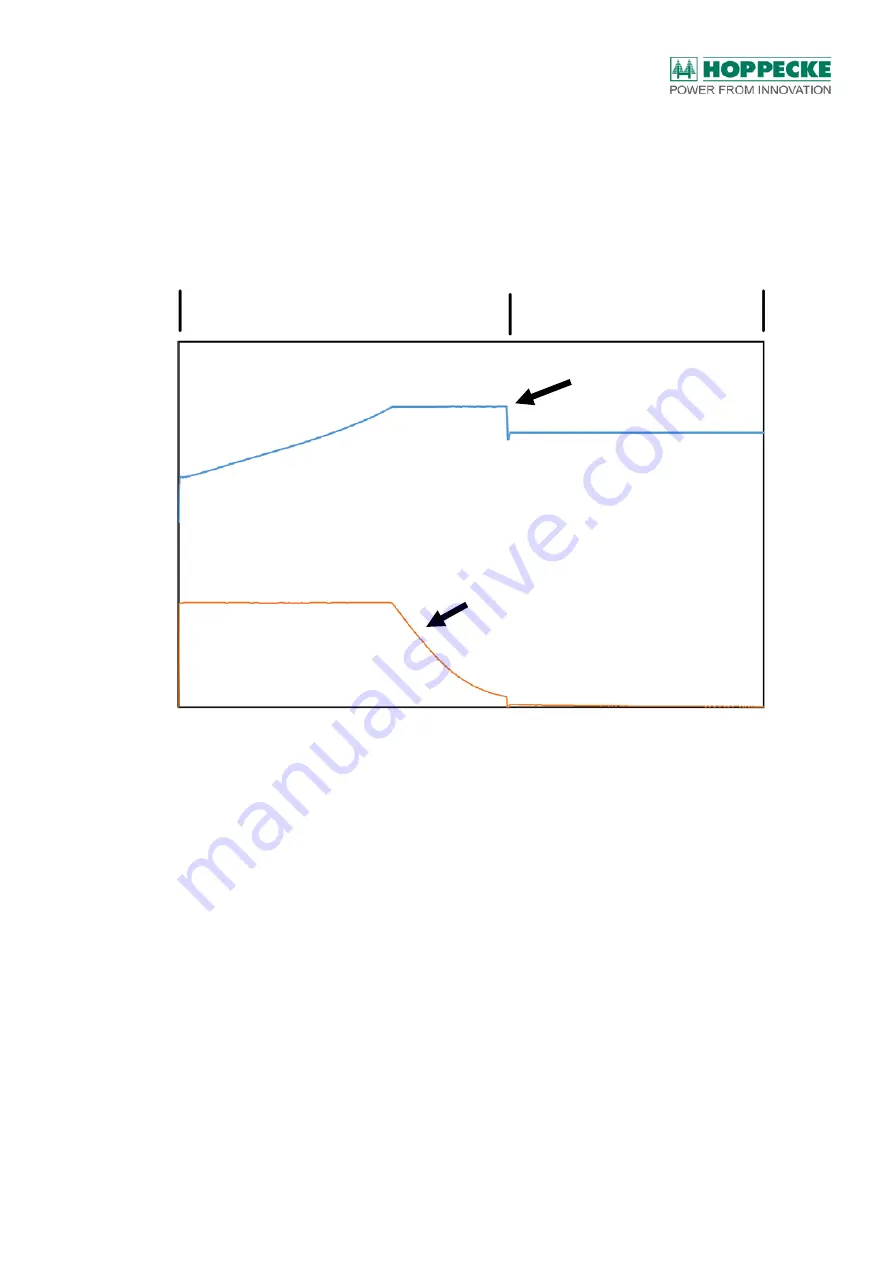
Function and structure
Batteries_Rail_Power_Manual_en02.docx
18
5.3.2.
Two-stage charging with constant current, constant voltage (IU0U)
The two-stage charging process (IU0U) initially works according to the same principle as the
single-stage charging process. First the current is limited, then the voltage is kept constant
when a certain value is reached. This first voltage threshold is called the "boost voltage".
When the boost voltage is reached, the charge current decays. When a certain charge
current is reached (usually I
50
= C
n
/50h), the voltage is reduced to a lower value. This
voltage value is referred to as the "float voltage".
The advantage is that the boost voltage can be selected higher than with a single-stage
charge. This extends the constant current phase, resulting in a better state of charge in a
shorter time.
After reaching the current threshold (I
50
), which indicates that the battery has been
sufficiently charged, the voltage is switched to the float voltage. This voltage is significantly
lower than the voltage at single-stage charging. This keeps water consumption to a
minimum while maintaining the state of charge.
If there has been a discharge of the battery, the charging current will increase again. When
the switch-over point (I
50
) is reached, the charging voltage is reset to the boost value to
quickly recharge the battery. Then the charging current drops again and the charger
switches back to float voltage.
As a result, this charging process eliminates the compromise between water consumption
and state of charge of the single-stage charge.
In the case of two-stage charging, a reduction in the state of charge must also be taken into
account when the battery is designed. The value is usually in the same range as for single-
stage charging.
Boost-Voltage
Float-Voltage
Voltage
Strom
Current
Time
















































